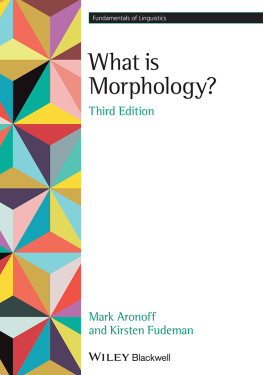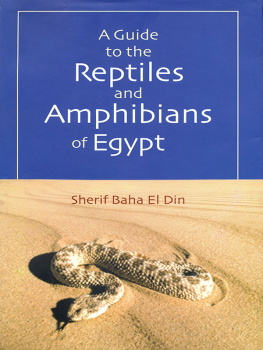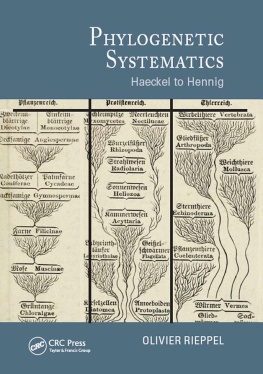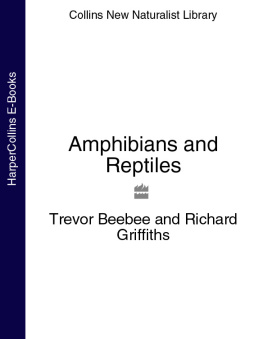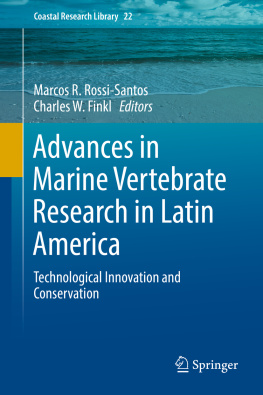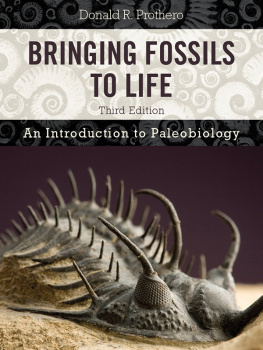VERTEBRATE BIOLOGY
VERTEBRATE BIOLOGY
THIRD EDITION
Systematics, Taxonomy, Natural History, and Conservation
Donald W. Linzey

JOHNS HOPKINS UNIVERSITY PRESS | BALTIMORE
2020 Johns Hopkins University Press
All rights reserved. Published 2020
Printed in Canada on acid-free paper
9 8 7 6 5 4 3 2 1
Johns Hopkins University Press
2715 North Charles Street
Baltimore, Maryland 21218-4363
www.press.jhu.edu
Library of Congress Cataloging-in-Publication Data
Names: Linzey, Donald W., author.
Title: Vertebrate biology : systematics, taxonomy, natural history, and conservation / Donald W. Linzey.
Description: Third edition. | Baltimore, Maryland : Johns Hopkins University Press, 2020. | Includes bibliographical references and index.
Identifiers: LCCN 2019023831 | ISBN 9781421437347 (hardcover) | ISBN 9781421437347 (ebook)
Subjects: LCSH: Vertebrates.
Classification: LCC QL605 .L48 2020 | DDC 599dc23
LC record available at https://lccn.loc.gov/2019023831
A catalog record for this book is available from the British Library.
Special discounts are available for bulk purchases of this book. For more information, please contact Special Sales at .
Johns Hopkins University Press uses environmentally friendly book materials, including recycled text paper that is composed of at least 30 percent post-consumer waste, whenever possible.
To my wife, Nita, who has supported my academic and personal interests, and whose love and enduring patience have made this work possible
Brief Table of Contents
CONTENTS
PREFACE
V ertebrate biology is a vast and diverse field in which changes are constantly occurring, new research is continually being published, and new species are continually being discovered (and, unfortunately, some species are becoming extinct). As discoveries are made, old concepts fade away and new ones emerge. We are now at a point in time where acceptable solutions must be found to major environmental problems such as global warming, fragmentation of habitats, isolation of populations, and the decline in biodiversityall of which play a role in the distribution and abundance of vertebrate populations. This is why vertebrate biology is so important: it is an opportunity for you to learn about the organisms most closely related to humans with whom we share this ever-more-crowded planet.
Vertebrate biology is a broad field: there is no reason to ignore parts that may be currently unpopular or that do not engage us personally. We will use information from physical sciences such as chemistry and geology as well as from a wide variety of biological specializations such as botany, genetics, cell biology, physiology, anatomy, and ecology. I have tried to achieve balance in terms of the whole field of vertebrate biology: systematics, paleontology, physiology, ecology, and so on. I have also tried to achieve balance both taxonomically and geographically.
Vertebrate Biology is designed to provide a firm foundation for students interested in the natural history of vertebrates. A course in vertebrate biology can be the gateway to an exciting and gratifying career. It may lead one person to specialize in a field like ichthyology, herpetology, ornithology, or mammalogy, while another may wish to work in a broader field like ecology, conservation, or wildlife management. Still others may become museum curators, writers, or videographers. As an instructor of vertebrate biology courses, I recognize the rewards and challenges in providing a strong foundation for persons with interests in each of these fields.
This third edition has been completely revised and updated to reflect the most recently published research. New illustrations have been added to complement those already in the text. A color plate section of 32 photographs and illustrations has been added. The bibliography, websites, and selected readings have all been updated and expanded.
Vertebrate Biology has provided a firm foundation for a wide array of students, teachers, and researchers in many countries for more than 20 years. It is my sincere hope that it will continue to do so for many years to come.
* * *
I wish to thank all of the many scientists, researchers, colleagues, and photographers who have graciously allowed me to use their data and/or photographs as well as those who offered beneficial comments to strengthen the third edition. Many of their contributions have been incorporated into this work.
I am also grateful to the many individuals at Johns Hopkins University Press, especially Tiffany Gasbarrini, Senior Science Editor, and Esther Rodriguez, Editorial Assistant, for their help in producing the third edition. Copyeditor Carrie Love is the most meticulous person with whom I have ever worked. Her dedicated efforts have strengthened the manuscript.
My thanks to Kiri DeBose, Head, Virginia Tech Veterinary Medicine Library, and Julia Feerrar, Head, Digital Literacy Initiatives at Newman Library and library liaison to Virginia Techs College of Natural Resources and Environment, for their help in acquiring vital data and interlibrary loans.
Special thanks go to Erica Beasley and Stephen Lewis, Computer Support Specialists, Virginia Tech College of Natural Resources and Environment, for their expertise and assistance with a variety of computer techniques as well as their help in converting computer files. I also wish to express my appreciation to Tara Craig, Computer Technician, and Dana Keith, Assistant to the Department Head, both in the Department of Fish and Wildlife Conservation at Virginia Tech, who were always available with advice and expertise to get me out of troublesome situations.
Finally, I thank my wife, Nita, for putting up with the piles of books, correspondence, and manuscript chapters that cluttered several rooms of our home for many months. Her understanding, patience, and computer expertise, as well as assuming many of the chores around our home to allow me additional time to work on the manuscript, made the revision of this book possible.
VERTEBRATE BIOLOGY
1 | The Vertebrate Story
An Overview
Treat the earth well: it was not given to you by your parents, it was loaned to you by your children. We do not inherit the Earth from our Ancestors, we borrow it from our Children.
Native American Proverb
INTRODUCTION
Life on Earth began some 3.5 billion years ago (Bya), when a series of reactions culminated in a molecule that could reproduce itself. Although life forms may exist elsewhere in our universe or even beyond, life as we know it occurs only on the planet Earth. From this beginning has arisen all of the vast variety of living organismsviruses, bacteria, fungi, protozoans, plants, and multicellular animalswhich inhabit all parts of our planet. The diversity of life and the ability of life forms to adapt to seemingly harsh environments are astounding. Bacteria live in the hot thermal springs in Yellowstone National Park and in the deepest parts of the Pacific Ocean. Plants inhabit the oceans to the lower limit of light penetration and also cover land areas from the tropics to the icepacks in both the Northern and Southern hemispheres. Unicellular and multicellular animals are found worldwide. Life on Earth is truly amazing.
Vertebrates, which have been a part of the Earths fauna for more than 500 million years, have evolved into many different groups, which have successfully adapted to virtually every habitat. They can swim, crawl, walk, run, climb, glide, and fly. Insects (phylum Arthropoda: class Insecta) are the only other group in the Animal Kingdom whose evolution surpasses that of the vertebrates in terms of global distribution and adaptation to such a wide variety of habitats.


